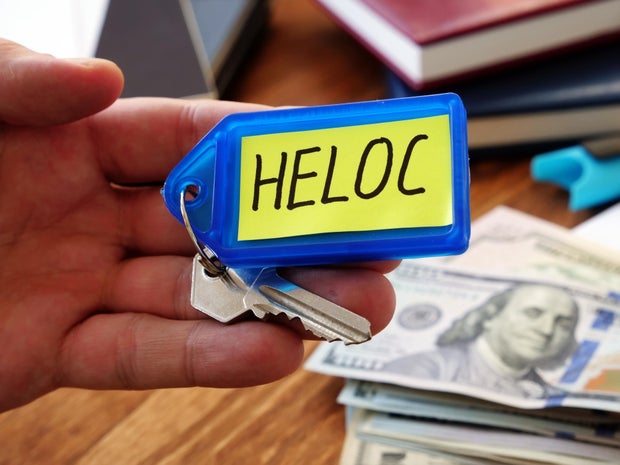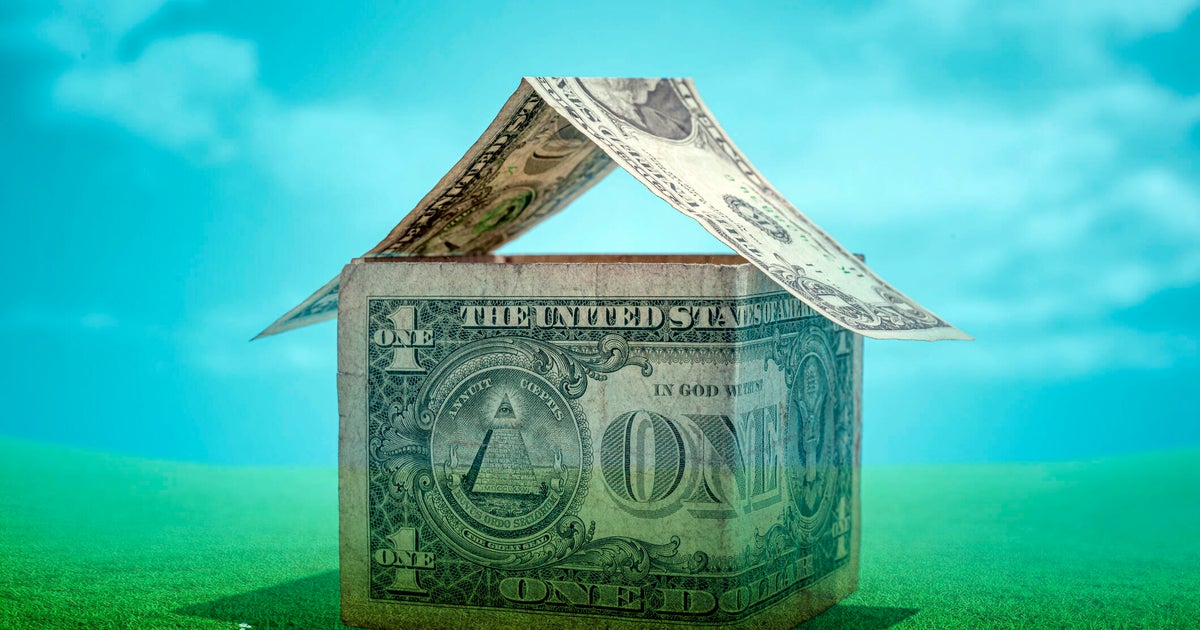What you should know about HELOCs
With rising costs for everyday purchases, many people are having more trouble than usual sticking to their budgets. And for those who are spending more than they're making, such as by racking up credit card balances, rising interest rates can also make it challenging to pay off debt.
At the same time, real estate prices have also generally been trending up over the past few years. So, homeowners might have gained equity, based on the difference between their mortgage balances and their current appraised home value.
One way to access that equity and gain financial flexibility, such as to pay off high-interest debt, is to open a home equity line of credit (HELOC). If you think you could benefit from taking out a HELOC then start exploring your options here now or use the table below to check eligibility.
What is a HELOC?
A HELOC is true to its name in the sense that it's a revolving line of credit based on the amount of equity a homeowner has. But what does that mean exactly?
A revolving line of credit involves a given borrowing limit that can be drawn down and paid back on an ongoing basis, with certain terms varying based on the lender.
A credit card is one example of a revolving line of credit. You might have a credit limit of, say, $10,000 on your credit card that you can essentially borrow from at any time by swiping your card, rather than paying cash for a purchase. If you make a $5,000 purchase, you have $5,000 left on your credit line, but after you pay off your balance, you'll return to having a $10,000 limit.
A HELOC is also a line of credit that you can draw from as needed, as opposed to a home equity loan that gets paid out as a lump sum. You might not want to borrow, say, $100,000 all at once, but having that line of credit open to draw from as needed could be helpful.
HELOC limits are often much larger than credit card limits, assuming you've built up some home equity, which equals your property's appraised value minus your mortgage balance. Even if you haven't paid down your mortgage much, you might have a lot of home equity based on your home appreciating during the recent real estate boom.
In general, you can borrow up to 85% of your home's value on a combined loan basis, meaning your mortgage balance plus your HELOC can equal up to 85% of your home's appraised amount. However, that can differ based on the lender and your circumstances.
HELOCs are also secured against your home, meaning the lender could foreclose on your home if you don't pay back your debt. While that can increase your risk, it can also make lenders more comfortable providing you with higher limits than you could get with an unsecured loan. You can easily explore your HELOC options online now or use the table below to check some local offers.
How a HELOC works
A HELOC typically works by having two periods: a draw period followed by a repayment period.
During the draw period, you can borrow from your HELOC pretty much as needed, though lenders can have varying terms around drawdown requirements. This period usually lasts around 10 years.
In many cases, you only have to make interest payments on the amount you borrow during the draw period, rather than paying back the principal. That said, you might want to make principal payments at times if you want to refresh your credit line. The interest rate is typically variable, so it can go up or down over time based on market conditions.
After the draw period ends, some HELOCs have a multi-year repayment period, such as 10-15 years where you pay back the principal plus interest. With some HELOCs, though, you have to pay back what you've borrowed right away in full once you reach the repayment period, in what's known as a balloon payment.
Benefits of using a HELOC
Using a HELOC can help homeowners access funds without necessarily borrowing huge amounts all at once. By being able to draw on a line of credit, you can adapt to changing circumstances.
For example, maybe you want to borrow a little bit of money to redo your kitchen, but you also want the option to borrow more in a couple of years in case you want to remodel your bathrooms too. Rather than getting separate loans for each occasion, you could draw from your HELOC as needed. HELOC interest can also be tax-deductible when using the funds to improve your home, though you'll want to confirm current IRS rules.
Another benefit of a HELOC is that interest rates are generally less than they are for some other types of credit lines. That's not to say that HELOCs are a free source of funds — current rates are approximately 7-8% in March 2023 — but credit card rates are roughly 20%, for example.
So, if you're looking to pay off high-interest debt, it could be beneficial to use a HELOC, and then you'd be left with a more affordable credit line. Use the table below to see what HELOC interest rates are available for you.
How to get a HELOC now
To get a HELOC now, you can look online for lenders offering HELOCs or visit a local bank or credit union, for example. The process is similar to taking out a mortgage in the sense that you can shop around for different lenders and compare their interest rates, fees, terms, etc.
Keep in mind that taking out a HELOC does carry potential drawbacks, such as if you lose your home by default. And if you sell your home, you typically have to repay the HELOC at that time. You also might end up paying more money in interest based on variable rates, as opposed to, say, taking out a fixed-rate home equity loan or a cash-out refinance mortgage, depending on how the market moves.
So, you should do your due diligence and consider speaking with a trusted advisor who can help you weigh your options. You can start exploring your HELOC options online now.






